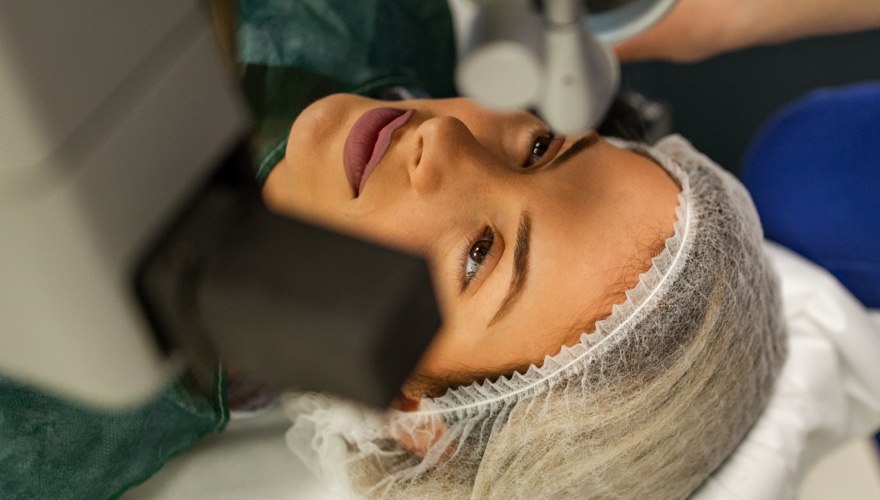The eye care experts at Wills Eye Physicians Bailey Weber Wisner explain what patients can expect during a LASIK procedure, and how to have a speedy recovery.
What specifically happens during a LASIK procedure?
From the patient’s perspective, it’s pretty easy. We often do it without any sedation. People will sometimes use a very mild sedative just to help take the edge off, but we don’t want people to be asleep. There’s a light they have to look at that helps with the laser. Usually, patients lie flat in a comfortable stretcher, and there’s one laser on either side of them, and the bed rotates. During the procedure, we talk you through what to expect. It only takes about five minutes per eye. There will be periods of time where the vision grays out or gets blurry, but there’s no pain during the procedure. The eyes are totally numbed beforehand with eyedrops. Patients go home later that day with slightly blurry vision that looks like they’re underwater. We ask patients to rest for the first few hours or so after LASIK. Most people go home and nap. There might be some tearing and burning after the procedure, but that’s temporary. We ask patients to take it easy the day of the procedure.
Are there usually any side effects?
Many people do notice a halo around light sources at night for the first two to three months. Many people experience some dryness. However, both conditions typically resolve. There are some people that can have some long-term dryness, and that’s the most common long-term issue with LASIK. Having some dry eye to start isn’t a reason not to have to LASIK, but realizing that it can get a little bit worse is important to know.
Would you describe the recovery time as relatively short? Do people need to take time off of work?
We ask patients to take off work the day of the procedure and the day after. If they want to work from home or something, that’s fine. Everybody heals differently. You don’t want to be the person that’s a little slower to heal and have something planned that you need to do. But two days after, you’re fine to get back to work. We do ask that people don’t rub their eyes for about three weeks after the procedure, and that they don’t swim underwater for a week after the procedure. You really need to make sure that that flap created during the procedure seals down nicely. If you rub the eye aggressively, you could potentially displace the flap.
Is LASIK permanent?
In general, yes, it’s permanent. There can be slight changes in the eye over time, over the period of decades, but in general, it is stable. Occasionally people need to have what’s called an enhancement. Again, at Wills Eye Bailey Weber Wisner, we’re fairly conservative with whom we choose to do the procedure on, so our enhancement rate is fairly low.
What exactly is an enhancement?
It’s a repeat LASIK procedure.
Is LASIK covered by insurance?
It is not. In rare cases a person’s vision plan may cover it, but it’s not covered by medical insurance. However, it’s typically not covered by vision insurance. You can use an HSA or an FSA. You can also use payment programs like CareCredit, but it won’t be paid for by your insurance.
